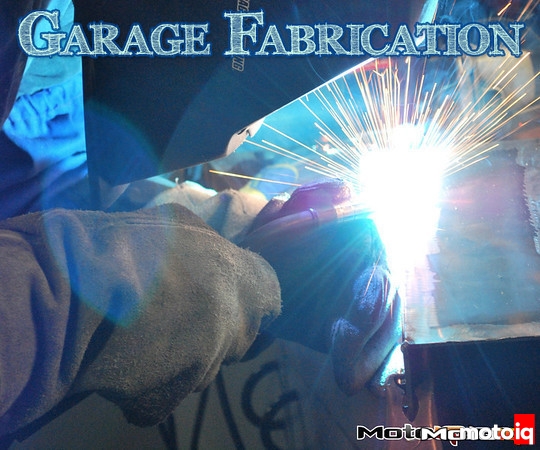,
Now that the piece is held together in a somewhat stable manner, and your welder shouldn't be making boogers, it's time to start burning metal on the real deal. As with setting the pieces up, a little patience goes a long way here. Instead of just burning through the whole weld from left to right in one continuous pass, it's best to tack weld the two pieces together and then weld it in sections. The tack welds themselves should be done with minimal stickout to ensure strong penetration and to minimize the amount of material used to complete the tack. Tack weld the workpiece about once every six inches to ensure a stable joint, failure to do so will likely result in the metal warping and pulling away at one end or another. The tack welds need to have solid penetration as they will be the only thing holding the piece together until final welding. Keep in mind that you may not be able to access a weld joint after tacking a new piece on, so make sure to plan ahead while you are assembling your workpiece and finish weld anything that will be hidden before the workpiece is fully tacked.
 |
| All tack welded and ready for finishing. Note the full open corners. This allows for more even distribution of heat between the two pieces of metal and also allows for a cleaner look as the weld material will fill in the corner. |
If you're welding an enclosed container like this, make sure to drill a gas relief hole (1/8″ is usually sufficient) in one of the sides (preferably the one least likely to be seen). Welding makes a lot of heat. Heat expands things. If you don't have a gas relief hole, as you finish the last weld, that gas will no longer have any place to escape through. Since your newly-created slag is the softest part of the container, this is where the gas will push through, creating annoying little boogers that are unsightly and extremely porous. After you've finished welding, allow the entire workpiece to cool, then weld in the gas-relief hole. For this project, I tacked five sides of the container together, and left the top for last. More on that in a bit.
 |
| A gas relief hole drilled into an inconspicuous side will allow for the expanding gasses that will soon be trapped in your workpiece a place to escape through other than your ongoing weld. This outgassing usually manifests as an extremely frustrating bubble immediately after the arc is shut off. |
Once you've got it tacked and ready to finish weld, go ahead and start running your beads. If it's an especially large piece with lots of welding time, you will need to pay attention to how much time you're welding compared to the rated duty cycle of your welder. A welder's duty cycle is rated as a percentage of how much time it can maintain an arc in a 10 minute period. A welder with a 40% duty cycle will be able to weld for four out of ten minutes. Keep in mind that the rated duty cycle decreases with increased welding current, so this will most likely become more of a limiting factor when you've got it turned all the way up. Do not push your welder beyond this limit if you can help it. Some welders have built in features that don't allow you to exceed duty cycle, some don't, so if you've got a large job it's best to pay attention to duty cycle.
To attach small things that don't weigh too much, like tabs, I like to use welding magnets. This allows you to position the tab without needing to hold it. Like everything else you're going to weld, it's best to tack-weld the tab on first, and then remove the magnet. Trusting the magnet to hold while running a bead, or not end up welded to your workpiece, is not a good idea.
 |
| These little magnets save your friends from burns that would happen if they were helping you hold items like these tabs onto the workpiece. |
Now that I've got all the tabs and five of the sides fully welded, it's time to put the booze and coinage inside so I can entomb them forever (or until Martin gets motivated and cuts it open for some righteous slot-machine action). However, there are some serious considerations when you're going to trap something extremely flammable (the booze) in a metal box along with a bunch of heat-conducting metal coins. This is compounded by the fact that my idiotic brain was perusing the bottles by external dimensions, not construction, and ended up with a plastic bottle. To make things kind of marginally “safe” (again, fire extinguishers are not optional equipment when welding), I decided to fill the container to about an inch shy of the top with water to absorb most of the heat. Since water vapor will likely make for a lot more gas volume that needs to escape from the box, I made the gas relief hole extra large to compensate.
 |
| Making things moderately dangerous (as opposed to extremely) is some water to act as cooling for the hot welding about to commence. The sealed box I'm making with a gas relief hole would probably make a decent flame thrower if I allowed the bottle to heat enough to melt, lack of foresight and buying a plastic bottle are more reasons why you shouldn't listen to me. At all. |


